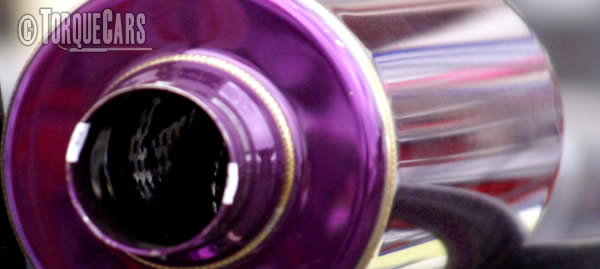Tuning the Ford EcoSport
"Ta for reading this Ford EcoSport tuning guide."
Ford EcoSport is a subcompact crossover bult by Ford in Brazil, thanks to it’s popularity and success it was launched in other regions, including Thailand, Russia and Romania.
The EcoSport is a brilliant tuning project to do. If you do your planning then you can create an awesome EcoSport but don't be fooled there are lots of motorsport inspired mods out there that will simply not suit it read our unbiased guides first.

Handling/Suspension upgrades
Improving the handling for loads of people first priority in your EcoSport tuning project.
Adding some negative camber on the wheels and a few degrees of toe (in for better stability or out to improve cornering), will radically benefit your EcoSport in handling and cornering.
Drop the car by as much as 30mm - 41 mm. and fit modified stiffer dampers, bigger drops will need other modifications in most instances.
Fitting bigger discs and better high performance brake pads will make for sharper enhanced braking.
Bear in mind that motorsport pads can be noisier and will need a lot of heat before they bit.
On a road car the brakes are occasionally used and will not be effective so specify brake pads which have a low working temperature.
Don't just look at the peak power figures, you need to see the whole torque curve when determining if a mod is right for you EcoSport.
The best power gains come from larger engine sizes. The more you start with the bigger the return on investment so engine swaps are good value mods for small engined cars.
Power mods.
These mods modified mods are usually fitted by our members, decide how far you want to go before you get started.

- Zetec-Rocam
1.0 L gasoline 8v supercharged, 70 kW (95 PS) (to 2006) - Zetec-Rocam
1.6 8v gasoline/ethanol, 82 kW (111 PS) - Duratec 2.0 L 16v 107 kW (145 PS)
- Duratorq 1.4 L TDCi Diesel, 50 kW (68 PS) (export only)
Second generation (2012–present)
- 1.0 L I3 EcoBoost turbocharged
- 1.5 L I3 Ti-VCT
- 1.5 L I4 Ti-VCT
- 1.6 L I4 Ti-VCT
- 2.0 L I4 Ti-VCT
- 1.5 L I4 TDCi (diesel)
Getting the right uprated upgrades for your planned usage of the car is essential. Stage 3 competition upgrades just don't work well on the road and will make the car undrivable.
Please watch our introduction Video tutorial to car tuning. Be sure to subscribe and support our new channel.
How to tune your car
- Improve the handling
Focus on Suspension improvements, such as coilovers and make sure the bushings are in good order and that the alignment is correct. Then focus on improving the brakes, with a big disk brake conversion kit and fast road brake pads.
- Remove restrictions
Focus on the intake and exhaust with filters being the common point of restriction in a tuned car. Intercoolers may also become restrictive on turbo engines so this may also need to be uprated.
- Burn more fuel & air
Increase the fuelling so it matches the air coming into the engine. The ratio is important so you need to improve the fuel pump and injectors, so the head mods, big valve conversions, fast road camshafts and forced induction upgrades extra supply of air is adequately met.
- Test and replace any weak parts
Weak areas are commonly the clutch, the turbocharger and pistons and crankshaft in a highly tuned engine. Makes sure these components will cope with your power aspirations.
- The Tune or Remap
A cars ECU controls the fuel, timing, spark and even the turbo in some cases, so to fully extract your gains you should remap the car last and this will fully release the power. Some cars are easy to map, and others require piggyback ECU's or aftermarket ECU's but this is the most vital step of your tuning project.
Modifying to Stage 1:
Lighter flywheel, Alloy wheels, Sports exhaust, Suspension upgrade (drop 30mm - 41 mm.), Panel air filter, Remap.
Modifying to Stage 2:
fuel pump upgrades, high flow fuel injector, Ported and polished head, Power/Sport clutch, Fast road cam.
Modifying to Stage 3:
Adding or upgrading forced induction (turbo/supercharger), Sports gearbox, Internal engine upgrades (pistons/head/valves), Engine balancing, Competition cam.
Your goal when tuning the engine should be a nice flat torque output. You want to avoid sending all the power to be at the top end unless you are creating a motor sport car.
In this article we shall give a limited introduction to the best performance parts for your car, but we'd encourage you to spend some time on the site looking into the details of each type of performance modification.A fast road camshaft will be one of the best NASP power mods you can do with a single part fitted to your engine.
It maximises the intake and exhaust durations and pushes up the power if done right. Ideally you'd add other mods and finish up with a performance chip. We'd also caution you not to go with a motor sports profile cam as this upsets the engines idling and general town driving characteristics.
You will need to ensure that the engine is not starved of fuel so will need to uprate the fuelling.
Using higher octane fuel is another option if you find you are suffering from detonation or premature ignition on your Ford project after fitting other modified upgrades.  To get sufficient fuel you may need to upgrade the injectors on your engine.
To get sufficient fuel you may need to upgrade the injectors on your engine.
A fuel pump will only deliver a finite amount of fuel, so you may need to uprate this if your injectors are demanding more fuel.
Intake and Exhaust Tuning.
Now we move on to the intake and exhaust and ensure proper flow through the engine.  Contrary to popular belief there is usually very little if any power gain to be had by fitting an induction kit, they only help and are recommended after you increase the engines power to the point where the standard air intake box cannot cope!
Contrary to popular belief there is usually very little if any power gain to be had by fitting an induction kit, they only help and are recommended after you increase the engines power to the point where the standard air intake box cannot cope!

Induction kits can work well on turbo engines and larger engines (if supplied with a suitable cold air feed or air box), generally though we'd just recommend for EcoSport engines you should settle for a high performance panel air filter preferably made from cotton.
Sports exhausts will certainly help air flow through the engine but do not go too wide or you may end up will reduce the flow rate. Stick to 1.5 to 2.5 inches for best results.
Head work including a head port and polished and 3 or 5 angle valve job will really help to release the potential of the engine. A good fast road power clutch will help to keep that power going where it should. Never skimp or expect the standard OEM clutch to cope. The best mods in our opinion for your EcoSport are fast road camshaft, remap, induction and exhaust, suspension.
NASP engines do not achieve big power gains if you remap them, unless you have done extensive modifications. With turbocharged engines this is another story. A remapped turbo will give impressive power gains and take full advantage of the strength of the block.
We've also seen some tuners experimenting with twincharging applications and making some very high power hikes.
Adding forced induction will see significant power gains but this is usually too expensive to be cost effective. It is usually cheaper to bolt on a supercharger than it is to install a turbo. With a turbo the power curve is related exponentially to the engine speed making it more challenging to map.
The nice steady boost and rpm characteristics of the supercharger make them more straightforward to map. Alternatively you could install water injection to reduce the risk of knock.
Alloy wheel upgrades.
Due to the fact that alloys are lighter they improve performance and they will help to cool the brake disks. Get a good soft compound tire to improve your handling and help improve traction on your EcoSport. Please note that although they can look cool on the EcoSport big alloys will actually decrease your performance. The larger you go the lower your acceleration will be - this to the change in your effective final drive ratio.
Due to this we would advise sticking to a maximum wheel size of 17 inches, although we know some of our members have fitted larger wheels with no problems.
- 2018 Ford Ecosport Tire Size
S 205/60R16
SE 205/60R16 & 205/50R17
SES 205/50R17
Titanium. 205/50R17 - 2019 Ford Ecosport Tire Size
S 205/60R16
SE 205/60R16 & 205/50R17
SES 205/50R17
Titanium. 205/50R17 - 2020 Ford Ecosport Tire Size
S 205/60R16 - SE 205/60R16 & 205/50R17
SES 205/50R17
Titanium 205/50R17
For more information on Tuning your car please join us in our friendly forum where you can discuss EcoSport options in more detail with our EcoSport owners. It would also be worth reading our unbiased Ford tuning articles to get a full grasp of the benefits and drawbacks of each modification.
Please help us improve these tips by sending us your feedback in the comments box below.
We love to hear what our visitors have got up to and which mods work best for them on each model of car. Comments are used to improve the accuracy of these articles which are continually updated.
If you liked this page please share it with your friends, drop a link to it in your favourite forum or use the bookmarking options to save it to your social media profile.
Check out TorqueCars new YouTube channel, and see their awesome new content...
Feedback
Please use our forums if you wish to ask a tuning question, and please note we do not sell parts or services, we are just an online magazine.
Help us improve, leave a suggestion or tip
